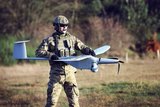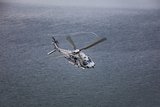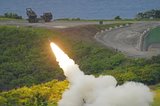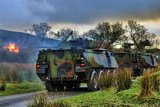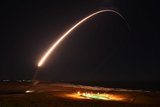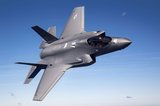China flies bombers around Taiwan
Chinese bombers and spy planes have flown around Taiwan, the air force said on 19 April as Taipei accused Beijing of trying to stoke regional tensions with its military drills.
China sees the democratically-governed island as a renegade part of its territory to be brought back into the fold and has not ruled out reunification by force.
H-6K bombers, Su-30 and J-11 fighters and reconnaissance aircraft took part in a patrol around Taiwan, air force spokesman Shen Jinke told the official Xinhua news agency
Taiwan Affairs Office spokesman Ma Xiaoguang said the exercise served as a warning against those pushing for Taiwanese independence.
Taiwan's defence ministry said on 19 April, multiple Chinese aircraft including bombers and reconnaissance planes were spotted on Wednesday afternoon flying over Miyako Strait - near Japan's southern Okinawa island - into the western Pacific before returning to their base via Bashi Channel off southern Taiwan.‘China has deliberately manipulated (the exercise) to pressure and harass Taiwan in an attempt to spark tensions between the two sides and in the region,’ Chiu Chui-cheng of Taiwan's Mainland Affairs Council told a regular briefing.
‘(We) will never bow down to any military threat and incentive.’
Chinese combat helicopters also conducted live-fire drills with missiles off southeast China, state media said, without confirming whether the exercises took place in the sensitive Taiwan Strait.
The People's Liberation Army (PLA) exercise took place Wednesday and involved various types of helicopters that tested ‘all-weather operational capability of the air force at sea,’ the official Xinhua news agency said.
State broadcaster CCTV showed footage of helicopters firing missiles at distant objects in the water.
The reports did not say exactly where the exercises took place, but they occurred on the same day that China conducted live-fire drills in the Taiwan Strait.
Beijing had announced the Taiwan Strait drills last week, further ramping up tensions following stark warnings against any independence moves by the self-ruled island.
Vessels had been ordered to avoid a certain area off the Chinese mainland, triggering speculation that a flotilla spearheaded by China's sole aircraft carrier would take part in the exercise.
But Taiwan's defence ministry said Wednesday that the drills only involved land-based artillery conducting ‘routine’ shooting practice, accusing Beijing of exaggerating its plans as a form of ‘verbal intimidation and sabre-rattling’.
The drills coincided with Taiwanese President Tsai Ing-wen's visit to Swaziland, one of Taipei's few remaining international allies.
Beijing has stepped up military patrols around Taiwan and used diplomatic pressure to isolate it internationally since Tsai took office.
Beijing has also been angered by Washington's arms sales to Taipei, and China protested last month after President Donald Trump signed a bill allowing top-level US officials to travel to Taiwan.
Washington switched diplomatic recognition from Taiwan to China in 1979 but maintains trade relations with the island.
More from Defence Notes
-
![How might European countries look to tackle drone incursions?]()
How might European countries look to tackle drone incursions?
Disruption of infrastructure in Europe, whether by cyberattack, physical damage to pipelines or uncrewed aerial vehicles flying over major airports, as has happened more recently, is on the rise. What is the most effective way of countering the aerial aspect of this not-so-open warfare?
-
![Taiwan approved for $11 billion weapon purchase from US]()
Taiwan approved for $11 billion weapon purchase from US
The US State Department’s approval of a multi-billion-dollar sale of weapons to Taiwan includes tactical mission networks equipment, uncrewed aerial systems, artillery rocket systems and self-propelled howitzers as well as anti-tank guided missiles.
-
![Ireland spells out $2.3 billion shopping list in five-year defence spending plan]()
Ireland spells out $2.3 billion shopping list in five-year defence spending plan
Ireland’s multi-annual investment in capital defence spending is set to rise from €300m in 2026 to €360m in 2029–2030 with major upgrades across land, air, maritime and cyber domains.
-
![Canada to deepen integration of multi-domain capabilities to strengthen its defences]()
Canada to deepen integration of multi-domain capabilities to strengthen its defences
The Canadian Department of National Defence has created new organisations to manage the procurement and integration of all-domain solutions and allocated US$258.33 million to strengthen production capacities.
-
![US National Security Strategy prioritises advanced military capabilities and national industry]()
US National Security Strategy prioritises advanced military capabilities and national industry
The 2025 NSS has emphasised investment in the US nuclear and air defence inventory and national industry, but it leaves multiple unanswered questions on how the White House will implement this approach.
-
![Canada set to look away from its neighbour and across the Atlantic for partners]()
Canada set to look away from its neighbour and across the Atlantic for partners
While non-EU UK struggles to join the Security Action for Europe initiative, which provides loans for defence programmes, Canada has become the first country outside Europe to get access – and did so for a nominal fee.









